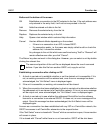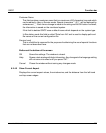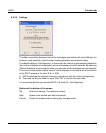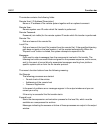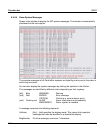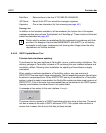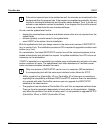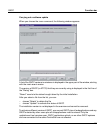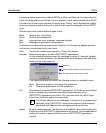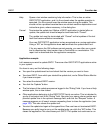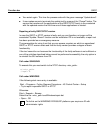
U41117-J-Z125-7-76 157
GXCC Function bar
Remote Password
Password (not visible) for the remote system ID under which data transfer is performed.
Messages
Field used to output messages from the components involved in file transfer. The
following text colors are used: black and green for the process sequence, red for errors,
and (in the event of errors) blue for associated messages resulting from platform-
specific system calls or from the file transfer protocol.
Current Remote Directory:
Absolute path name of the current remote directory displayed in the list box underneath,
starting from the root directory /. The list box provides a static display of the contents
of the current remote directory.
If the menu remains open for a long period of time, you can refresh the field contents
by selecting an entry with the path name “.” (single dot in the
“PATHNAME” column) and clicking the “OK” button.
The blue title bar explains the meaning of the different columns in the list box:
FID_ACCESS – File ID and access permissions
REF – Link counter
OWNER – Owner
GROUP – Group
SIZE – Size
MTH – Month
DY – Day
HH:MM – Time
PATHNAME – Path name (name of the file, directory, link)
Use your left mouse button to select entries in the list box. Depending on the type of entry,
clicking the “OK” button will either start file transfer to the local system or cause a change
of directory. You can also start this function by double-clicking the entry. Once data transfer
to the local system has been successfully completed, the “Show” text viewer is started
automatically. Its “Save As” function can be used to copy the file to the local system.
A subdirectory of the type <host-name>.rhost is created for the remote system
in the local system’s temporary XTCC directory. The name of the local file corre-
sponds to the name of the remote file. However, the remote subdirectory structure
is not mapped. Any obligatory entries that are missing must be entered manually
afterward. The default remote user ID is service. In the event of access problems
(Permission denied message), root can be entered as an alternative ID.
i
i



